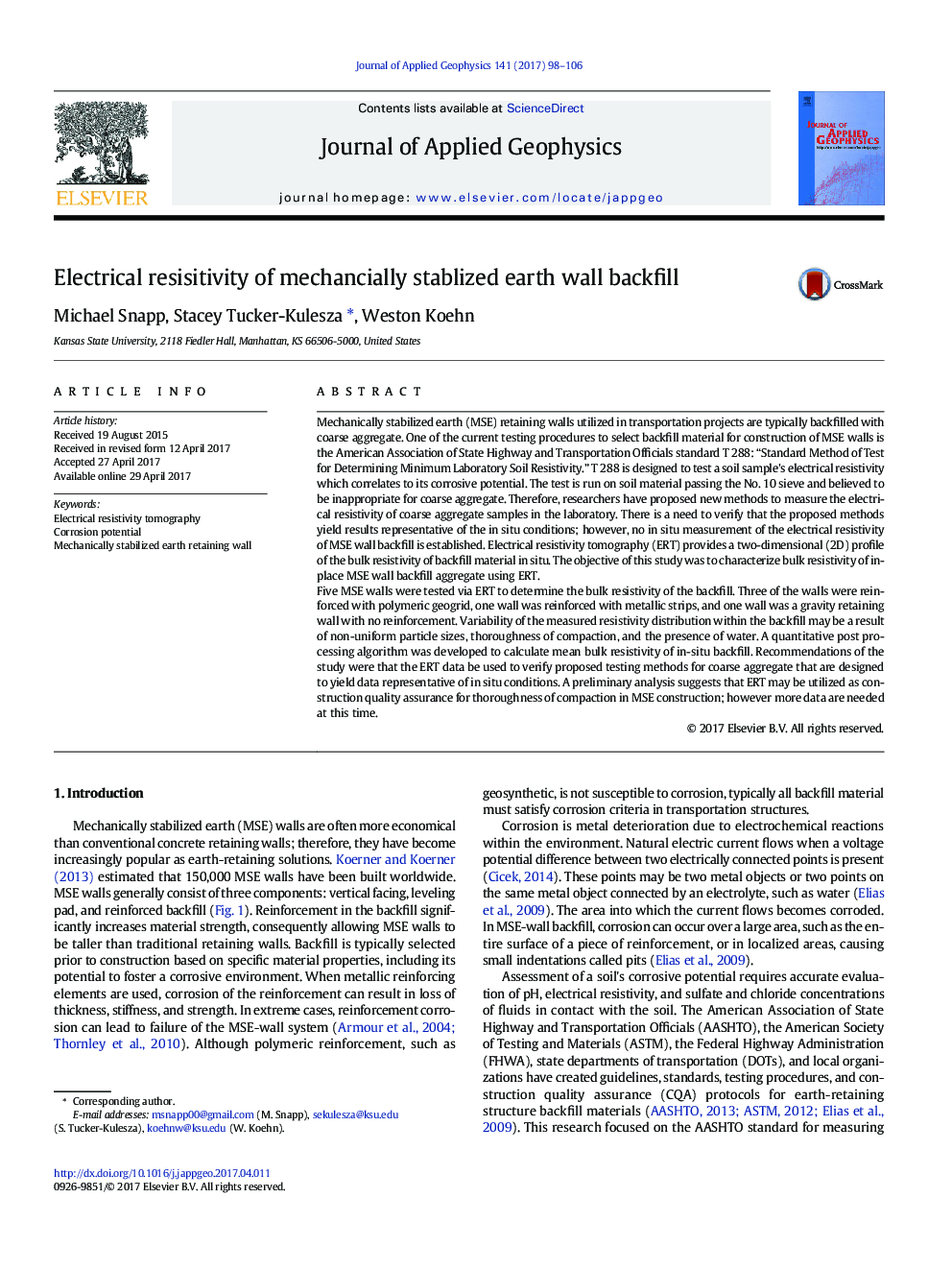| Article ID | Journal | Published Year | Pages | File Type |
|---|---|---|---|---|
| 5787112 | Journal of Applied Geophysics | 2017 | 9 Pages |
â¢Electrical resistivity of backfill is correlated to the corrosion potential of the material for earth retaining structuresâ¢The method of testing the resistivity of coarse aggregate backfill is believed to be inappropriateâ¢In situ resistivity of coarse aggregate was measured using electrical resistivity tomographyâ¢Recommendations were that the results be used to verify proposed resistivity testing methods for coarse aggregate backfill
Mechanically stabilized earth (MSE) retaining walls utilized in transportation projects are typically backfilled with coarse aggregate. One of the current testing procedures to select backfill material for construction of MSE walls is the American Association of State Highway and Transportation Officials standard T 288: “Standard Method of Test for Determining Minimum Laboratory Soil Resistivity.” T 288 is designed to test a soil sample's electrical resistivity which correlates to its corrosive potential. The test is run on soil material passing the No. 10 sieve and believed to be inappropriate for coarse aggregate. Therefore, researchers have proposed new methods to measure the electrical resistivity of coarse aggregate samples in the laboratory. There is a need to verify that the proposed methods yield results representative of the in situ conditions; however, no in situ measurement of the electrical resistivity of MSE wall backfill is established. Electrical resistivity tomography (ERT) provides a two-dimensional (2D) profile of the bulk resistivity of backfill material in situ. The objective of this study was to characterize bulk resistivity of in-place MSE wall backfill aggregate using ERT.Five MSE walls were tested via ERT to determine the bulk resistivity of the backfill. Three of the walls were reinforced with polymeric geogrid, one wall was reinforced with metallic strips, and one wall was a gravity retaining wall with no reinforcement. Variability of the measured resistivity distribution within the backfill may be a result of non-uniform particle sizes, thoroughness of compaction, and the presence of water. A quantitative post processing algorithm was developed to calculate mean bulk resistivity of in-situ backfill. Recommendations of the study were that the ERT data be used to verify proposed testing methods for coarse aggregate that are designed to yield data representative of in situ conditions. A preliminary analysis suggests that ERT may be utilized as construction quality assurance for thoroughness of compaction in MSE construction; however more data are needed at this time.
